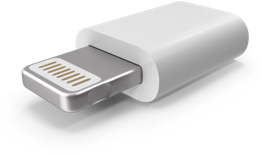What is Market Cap in crypto

‘Market cap’ is a term that is thrown around a lot in crypto – and there’s a reason why.
Market cap is easily one of the best indicators of a cryptocurrency’s stability, risk profile and growth potential. It refers to the total amount of money in a cryptocurrency project and is calculated by multiplying the current market price of a coin by the number of coins in circulation.
This article will breakdown everything you need to know about cryptocurrency market caps and how it can help you make smarter, more profitable investments.
Key Takeaways
- As a rule, the larger the market cap, the safer/stabler the investment.
- Cryptos with smaller market caps (Less than $10 billion) have a lot of potential for growth but come with much higher risk & volatility.
- Cryptocurrencies are often ordered by market cap as it is a good indicator of dominance, stability & growth potential.
- When you hear ‘low-cap’ or ‘large-cap’ cryptos, they are referring to market cap as it is the most straightforward way to rank and classify investments in terms of risk vs reward.
- While market cap is undoubtedly one of the most important metrics, it is by no means the only factor to consider.
- Market cap is calculated by multiplying the number of coins in circulation by the current market price of a single coin.
How is market cap calculated?
The market cap of any given crypto is calculated by:
The current market price of any given coin X The number of coins in circulation = Market cap

Does market cap indicate stability?
While even the biggest, most established cryptocurrencies see volatility, market cap is a good indicator of a crypto’s stability. In the way a larger ship can safely navigate a storm, a coin with a larger market cap is less susceptible to market turbulence.
Conversely, while lower-cap coins can bring you those 100X gains that crypto is infamous for, the risk is much higher as their price can be easily pushed around by market volatility.
The 3 types of crypto investments by market cap
Cryptocurrencies use market cap to be classified into 3 main categories in terms of risk/reward, with low-cap being the riskiest and large-cap being the safest.
Large-caps
Large-cap cryptos refer to the top 10 cryptos by market cap. Large cap cryptos often have a market cap of $10-15 billion and upwards, but these figures are increasing as more people get involved in crypto. It must be noted that Bitcoin and Ethereum are in a league of their own in terms of market cap and stability. They are both very well established compared to the rest of the large-caps, and most crypto investors have some stake in them.
Mid-caps
Generally, cryptos with market caps between $1 billion and $10 billion are mid-cap (or anything in the top 10-50 cryptos by market cap). Mid-cap cryptocurrencies carry more risk than large cap cryptos but are hardly the hail Mary plays that low-caps are. If you research well and are able to determine whether or not a mid-cap has the potential to develop with the needs of the market, they can be very lucrative investments.
Low-cap/micro-caps
Any crypto with a market cap below $1 billion (or not in the top 50 by market cap) can be considered a low/micro-cap crypto. These cryptocurrencies have the highest risk but the highest potential reward. But be warned, these are highly speculative investments that carry the off-chance of bringing those 100-1000X gains, or simply crashing to zero overnight.
Generally, having a range of cryptocurrencies with different market caps is recommended if you want a well-diversified portfolio. You can learn more about diversification of a crypto portfolio here.
If you’re new to crypto, check out our article on which crypto investing strategy is for you.

How to use market cap to evaluate an investment?
There are many ways to use market cap when deciding whether a particular project is a good investment for you.
Let’s say you are evaluating a crypto called ‘XCOIN’ – a common method is to:
- First look at the market cap of the most successful coins and XCOIN’s main competitors.
- Then compare XCOIN’s market cap with the market cap of XCOIN’s competitor’s and the other most successful coins on the market
- Note the circulating supply of XCOIN and factor in what the price of a single XCOIN could potentially reach if its market cap reached a level near its most prominent competitors/ or other highly successful cryptos in the space (take a competitor’s market cap and divide it by the circulating supply of XCOIN).
By doing this calculation, you can get an idea of what XCOIN’s potential for growth in price will be if it becomes a big player in market or the particular sector it is in.
Where can I view a coin’s market cap?
Digital Surge lists the market cap, along with the other most important metrics of a project underneath the chart for all 250+ of our cryptocurrencies.

For a more detailed view at the metrics of a coin, there are plenty of other popular websites to keep track of cryptocurrencies.
What is the difference between market cap and the total crypto market cap?
The total crypto market cap refers to the amount of money in the ENTIRE space. This can be calculated by adding up all the market caps of all cryptocurrencies in existence.
This figure makes it easy for us to identify the growth and strength of the cryptocurrency market at any point of time. If you look at any total market cap chart, you will see that the total market is steadily growing, which is a great sign for crypto.
Why is market cap a better metric than price?
Cheaper is not always better. A coin’s price does not actually tell you much at all about the investment itself. This is due to the fact that there are other factors (namely circulating supply and market cap) that dictate the way you should interpret the price.
Market cap is a much better indicator of the risk-reward profile of an investment and how susceptible it will be to market volatility. We will explore why this is the case in the example below.
Case study: Evaluating a cryptocurrency investment correctly
Market cap tells a much more detailed story than price. In fact, the price of a crypto can be very misleading for new investors.
For example, if a coin like Ripple is priced at 50 cents, it is just a tiny fraction of Litecoin’s price of $100. Let’s say you’ve already allocated most of your portfolio to Bitcoin & Ethereum and are now looking for something with the potential to grow a little faster. By looking at both Ripple and Litecoin you might think that Ripple is the coin which has a better shot of multiplying its value more easily than Litecoin can, since it looks to be much ‘cheaper’.
For many newbies, it might seem easier for a coin worth 50 cents to double in value compared to one worth $100. However, let’s take the market cap into account instead. Let’s say the current circulating supply of Litecoin is 50 million coins, as opposed to Ripple’s 40 billion coins.
So, if you calculate Litecoin’s market cap: $100 X 50 million = 5 billion
And compare it to Ripple’s market cap: $0.50 X 40 billion = 20 billion
You will now see that Ripple’s market cap is actually 4X bigger than Litecoin’s, despite its seemingly lower price. This means the chances of Ripple doubling in price are also far less than we might have thought (given that Ripple is a less volatile investment due to its bigger market cap).
But this is not always obvious. While Ripple’s $0.50 price might be attractive for someone looking to have a punt and see some big gains, by taking circulating supply/market cap into account, it is clear that the probability of Litecoin experiencing more extreme price volatility (for better or worse) is actually higher.
So, while you should always be wary about comparing cryptocurrencies with completely different functions (like Litecoin and Ripple), keep in mind that the market cap is a far better indicator of the stability and type of investment you’re looking at. For Litecoin to rival Ripple in terms of market share, its price (and market cap) would have to do at least a 4X (which is more likely to happen than Ripple doing a 4X). Remember: The smaller the market cap, the higher the chance of volatility.
Note: While in this case Litecoin is shown to be riskier than Ripple, in a broader sense it is still one of the more stable cryptocurrencies, and its volatility does not even compare with some of the smaller-cap cryptos that many people invest in.
Why is it important to look at the circulating supply vs the total supply?
When evaluating a cryptocurrency, it is important to consider the relationship between the total supply and the circulating supply. For example, while Ripple’s circulating supply might be 40 million, its total supply is 100 billion, meaning there’s A LOT of Ripple still to be released.
Unlike Bitcoin, of which there is a fairly small number of coins (21 million in total), Ripple’s higher supply means that the price of a single coin could be lessened in value over time if the supply increases and the demand remains the same. This is because the market cap of Ripple will be distributed to the billions of additional coins that will be released in the future, stopping the price of one coin from getting anywhere near the dizzy heights of a single Bitcoin.
For more tips on how to evaluate a good cryptocurrency investment, click here.
Is market cap the best way to measure the popularity of a cryptocurrency in the short term?
Not really. Market cap is a good way to measure the popularity of a coin over the long term but not the immediate short term. If you are looking to analyse short term pumps, trading volume is the metric to use.
Market cap as a metric doesn’t say much about actual trading volumes over the last 24hrs. By checking the 24-hour trading volume that a cryptocurrency has on different exchanges, you will get an idea if there is something substantial behind a recent dip or pump. You can see the trading volume of a coin across multiple exchanges by scrolling down below the price chart of a coin on Coin Gecko.
Can market cap be used to compare all types of cryptocurrency?
Not necessarily. In terms of market dominance, stability and growth potential, market cap works well – however, not all crypto assets have the same intended use. For example, Bitcoin is a form of payment and store of value, whereas Ethereum was created to facilitate decentralised applications and smart contracts.
So, while it can be useful to compare market caps across cryptocurrencies, it’s important to remember that they’re not direct competitors – success for one doesn’t necessarily mean failure for the others.
Check out Crypto Simple’s article on how to do your own research for a rundown of how to gather info in the world of crypto.
What are the risks of investing in a low market cap cryptocurrency?
Coins with low market caps (anything below $1 billion) should be approached with caution. While these low-cap gems can reach astronomical heights if things go well, they are often a stressful ride for any investor. Given the lack of investors, capital and track record, here are some of the risks of low cap cryptos:
- Liquidity issues – not all coins are as easy to buy and sell at a fair price like Bitcoin or Ethereum.
- Extremely susceptible to market volatility, news and competitor updates.
- A lack of trading volume which means the coin’s price can fluctuate wildly
- The risk of being manipulated by traders with extremely large holdings (aka whales). If a bunch of whales conspire to sell at the same time, your investment can go to zero very fast if its market cap is very low (it is MUCH harder to do manipulate the prices of BTC or ETH).
Is market cap all I need to evaluate a crypto investment?
Traders love market cap because of its ability to give a clean picture of a coin’s popularity, dominance, stability and growth potential. However, looking at any metric or indicator in isolation will not give you the full picture.
There are many other indispensable factors to consider if you want to make a truly informed decision. Some of these include:
- Circulating supply/total supply
- Trading volume
- The utility/use-case of the coin
- The community and team behind it
- The white paper & road map
To learn the quickest and most effective way to evaluate a crypto investment, click here.
What are the flaws/drawbacks of using market cap?
Market cap is an attractive metric for traders as it is clean and straightforward. While it does tell a lot about a crypto investment at a glance, it is far from a perfect measurement and market cap has some flaws to be aware of. Some of the drawbacks of using market cap as a precise guide include:
Market cap is based on the last transaction price
Given that the current price of any given coin makes up half the equation of market cap (along with circulating supply), it is important to keep in mind that prices can fluctuate wildly, meaning the market cap can also fluctuate wildly during times of volatility.
Market cap does not correlate exactly to value
Some don’t realise that market cap is based on price more than it is on the intrinsic value of the project. Changes in price/market cap refer to the price and not the actual utility of the coin – a project could increase in price (sometimes through hype & irrational sentiment) but the actual product itself may not have changed at all.
However, in crypto, the fact that the price goes up is usually a good indicator that people have faith in it and are willing to use it, which in many ways can be seen as an increase in the actual value of an investment. Just keep in mind that prices can rise (and fall) while the tech stays the exact same.
Circulating supply can be misleading
The circulating supply listed is not always accurate. It is difficult to tell how much of a coin or token’s supply is available for trading at any given time as many are being withheld from trading by whales or, alternatively, lost due to people losing their seed phrases, private keys & hardware wallets.
Sites like Coin-Market-Cap do not exclude lost coins from the circulating supply count as there is no way to know how many are lost. So, while the circulating supply may be all the coins in existence, a portion of them could be completely inactive or lost forever. For example, Bitcoin’s circulating supply is probably at least a few million less than what it actually is, not to mention the amount of people who are hording Bitcoin with no plans of trading it and adding liquidity to the market.
Fake coins with huge market caps do exist
It’s not common, but it is possible to create a coin with zero real value that has a $10 billion market cap. All it takes is creating a coin (an ERC-20 token on Ethereum would do the job) with a circulating supply of 10 billion. If one person buys one coin for $1 then the market cap automatically becomes $10 billion. You can game the system – which is why it’s so important to do your research thoroughly and consider other metrics when evaluating a project.
Bitcoin’s market cap unpacked
Bitcoin is the king of the cryptos. It’s ranked no. 1 by market cap and the most stable and safe crypto investment… for now. Here are some reasons why its market cap is over 1 trillion dollars (and counting):
- Reputation & first-mover advantage
Bitcoin was the first cryptocurrency which means it has the most name recognition and media coverage by far. The more familiar people are with a crypto, the more likely they are to trust it, and Bitcoin has been around long enough to gain a significant following.
- The finite supply
The total supply of Bitcoin will be 21 million, most of which are already in circulation. This scarcity is the reason it is referred to as digital gold. As demand rises the value of Bitcoin will also rise. Other cryptocurrencies, like Ethereum do not have this scarcity/finite supply factor.
- Widespread investment
Bankers, politicians, Uber drivers and teenagers own Bitcoin, and the total amount of money in Bitcoin is spread out over a diverse range of people. The ecosystem is huge which makes it harder for whales to manipulate the market, also making Bitcoin more stable and resistant to the type of market volatility which can crash other lesser-known coins.
Digital Surge lists the market cap, along with the other most important metrics of a project underneath the chart for all 250+ of our cryptocurrencies.
For a more detailed view at the metrics of a coin, there are plenty of other popular websites to keep track of cryptocurrencies.
Did this answer your question?
Digital Surge is the easiest way for Australians to buy, sell & store over 250+ cryptocurrencies. With extremely low fees, a uniquely user-friendly interface and a customer-support team you can rely on, getting involved in crypto has never been easier. Sign up today and enjoy safe, stress-free trading.
Crypto-curious? The time you spend here will be the best investment you ever make.
Enjoy effortless trading today
- ACN 620 473 109
- © 2021 Copyright Digital Surge




